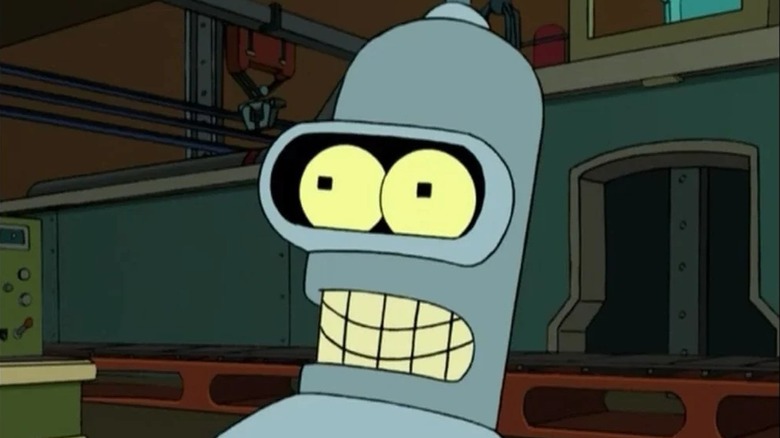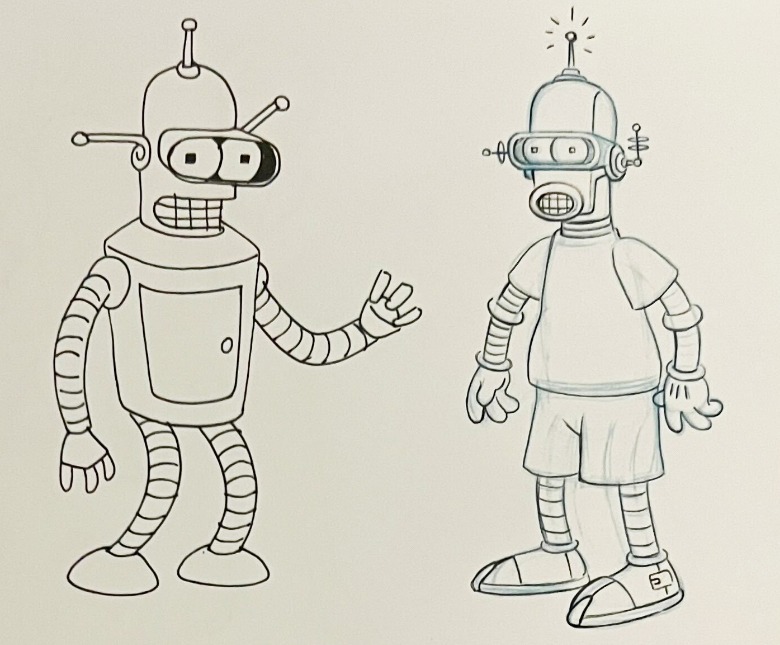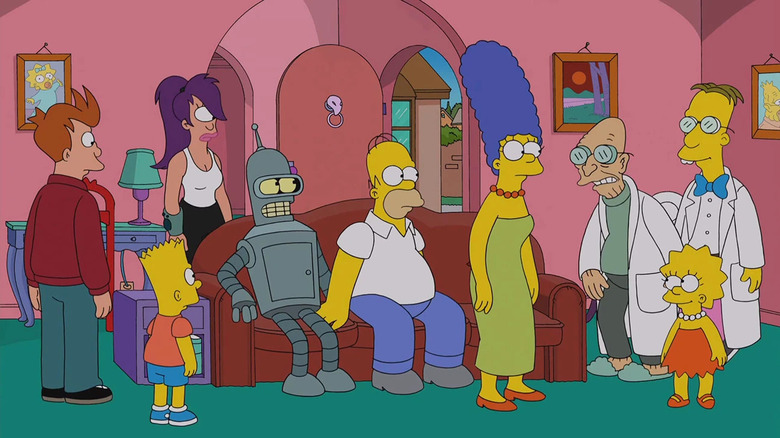One Early Design For Futurama's Bender Gave Him Three Antennas, Gloves, And Bart Simpson's Clothes
We may receive a commission on purchases made from links.
Few animated shows have stood the test of time in the way that "Futurama" has. Not only does the show have another new season currently airing, after first premiering nearly 25 years ago in 1999, but it has been canceled four different times, only to come back to life once again. Like any great show, much of the appreciation stems from the love viewers have for the characters. Bender, in particular, is a fan-favorite. A vulgar, alcoholic, selfish robot with lots of human tendencies, Bender is a brilliant creation. He also nearly looked a whole lot different than he does now.
A new book detailing the history of the show recently hit shelves titled "The Art of Futurama: A Visual History of Matt Groening's Cult Classic Animated Series," which is available now on Amazon. In it, art director Bill Morrison explains that Bender nearly had a completely different look. Rather than a relatively simple silver robot seemingly ripped from the pages of a '50s sci-fi story, he nearly had a more human look, particularly one that was a little meta.
"Some early drawings of Bender show him wearing Bart's clothes — T-shirt, shorts, tennis shoes == and Mickey Mouse gloves for some reason. And he had three antennae."
Matt Groening, who created "Futurama," also created "The Simpsons." So having Bender wear Bart's clothes would have been a little on the nose. Also, not for nothing, but Disney eventually purchased Fox, putting "Futurama" under the same roof as Mickey Mouse. Again, a bit meta, if by accident. Eventually, "Futurama" and "The Simpsons" did have a proper crossover, but it featured Bender as we know him and love him. Not like this.
Futurama, like any show, is a minor miracle
Voiced by John DiMaggio, Bender is a key part of "Futurama," equally as important as Fry, Leela, or any of the other members of the show's core ensemble. Bender was loosely inspired by a classic sci-fi story called "The Eleventh Voyage," with DiMaggio eventually bringing his own flair to the character after seeing him on the page. Imagine if DiMaggio had been given this other proposed version of Bender to work with. Would that have worked? Would DiMaggio have even landed the role? It's all fascinating to consider.
Beyond that, it all just goes to show what a minor miracle any show is, particularly one that is this successful and enduring. Bender's design was just one of many, many decisions that had to be made before the "Futurama" pilot made it to air on Fox in 1999. If Groening and the rest of the creative team had gone another way with any one of these key decisions, the show might not have worked. And that's even when taking into consideration that a show tends to change a lot beyond the pilot and its first season.
Fortunately, everything worked out in this case. They got Bender's design right. They got the right man to voice the character, and the show has now aired 160 episodes, with more seasons on the way. For those who are interested in diving a little deeper, here's what to expect from ""The Art of Futurama" book...
The world of "Futurama" comes to life in this deluxe art book, with commentary from the show's creator, Matt Groening, showrunner David X. Cohen, and producer Claudia Katz.
Just in time for the show's 25th anniversary and the new season on Hulu, this first and only Futurama art book examines the first seven seasons of the series, which first aired on Fox in 1999. Readers can dive into the development and visual history of all 150 episodes, including brand-new content, never-before-seen concept art, sketches, developmental work, and a complete episode guide.
"The Art of Futurama" is available now.


